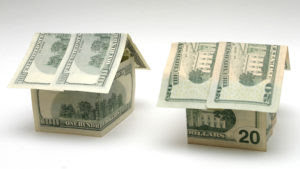 One of the biggest hurdles in buying a home is coming up with a down payment—the large chunk of cash that’s typically required to secure a mortgage for a house.
One of the biggest hurdles in buying a home is coming up with a down payment—the large chunk of cash that’s typically required to secure a mortgage for a house.
Fortunately, most lenders today offer a wide range of down payment options for 5%, 10%, 15%, or 20% of the price of the house. For many first-time home buyers, a government-backed FHA loan can be obtained for as little as 3.5% down. If you are a military member or veteran, there are even more budget-friendly options available to you.
If you have your eye on a home and want to see what a mortgage will look like based on different down payments, you can crunch your numbers with an online mortgage calculator or a home affordability calculator. And if you have the down payment you need, you can go straight to applying for mortgage pre-approval.
However, if you need to come up with a bit more cash, setting up a savings plan now will help you get the down payment you need. Here’s what you need to know when it comes to making a down payment.
Why big down payments are better
Sound financial planning can help you amass a large down payment. Here’s why that’s usually a good idea:
Smaller monthly payments: Homeowners with small down payments will find themselves with larger monthly mortgage payments.
Less risk for the lender: While low down-payment loans are available, lenders prefer to write loans with larger down payments. So you’ll have a larger choice of lenders to choose from.
Competitive interest rates: A bigger down payment increases your chances of getting a loan with a lower mortgage interest rate.
No mortgage insurance: If you choose a loan that requires less than a 20% down payment, your lender may require you to pay private mortgage insurance (PMI).
The PMI is usually tacked on to your monthly payment until you’ve built 20% equity.
Down payment strategies
Many home buyers tap their savings to procure the funds for a down payment, and often postpone large outlays in order to save money. But here are some other ways to come up with a chunk of money.
Gifts from family or friends: Some types of loans allow “gift” funds—money that is given to you—for a down payment. The person who gives the money must have no financial interest in the property and the funds must be a true gift, backed up by a letter. Banks won’t allow “gift” funds if the gift is actually a loan that has to be repaid.
Down payment assistance: Many local and state government programs offer down payment assistance for borrowers in need, so check with your lender or state housing commission for more information.
No-PMI home loans: There are a few loan options that allow you to put down less than 20% without the added PMI cost. Check with your lender to see if it offers a low-down-payment, no-PMI product if a 20% down payment seems too challenging
Make saving a habit
The surefire way to make your down payment is to start a fund for it now. Sure, saving for a down payment is tough, and building up a nest egg one paycheck at a time can be frustrating. To help you get you to a down payment faster, here are some strategies you can use to make saving money a habit—not a chore.
Review your budget. If you don’t know where your money’s going, you won’t know where you can cut back.
Curb nonessential spending. Once you know where your hard-earned pennies are going, ask yourself if you really need that Starbucks, name-brand item, or subscriptions to every streaming service. Trim the fat from your budget—and the savings could be substantial.
Direct deposit: Set up a payroll deposit into your savings account or an automatic checking-to-savings transfer on payday, to make savings a no-brainer
Low-risk investments: Consider certificates of deposit, money market funds, and other low- to no-risk savings or investment vehicles to help your savings accumulate interest.
Nix credit cards: Reduce your credit card debt by only using a card for emergencies.
Adjust your tax withholding: It may feel good to get a tax refund in the spring, but that’s essentially a free loan to the government. The money you get back is cash that could have been earning interest for a year. The IRS website has a calculator to learn how much in taxes you should have withheld from your income.
Looking for other ways to make your mortgage process easier? Check out our Guide to Getting a Mortgage.
By Craig Donofrio
Apr 27, 2021
Updated from an earlier version by Broderick Perkins
